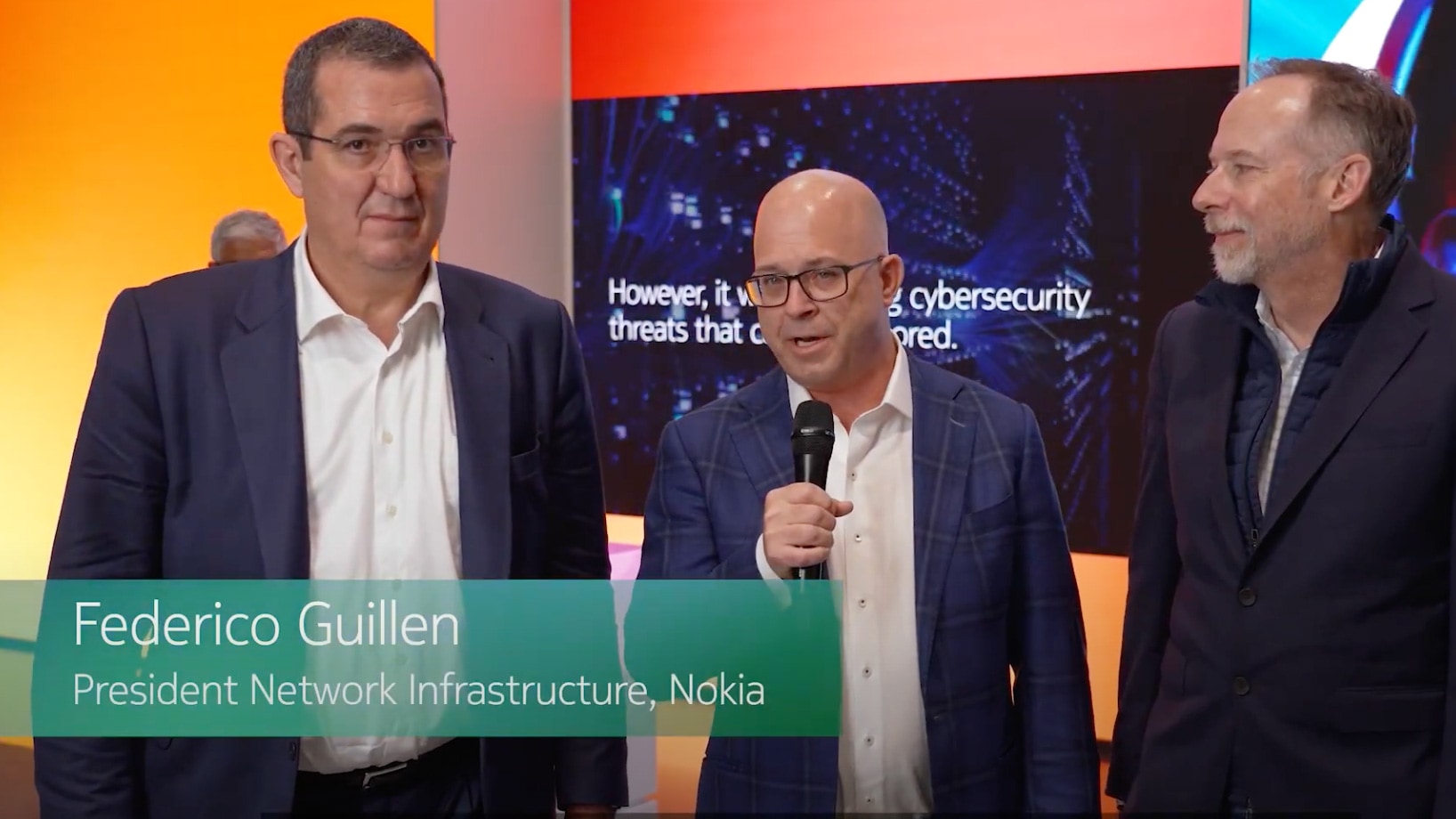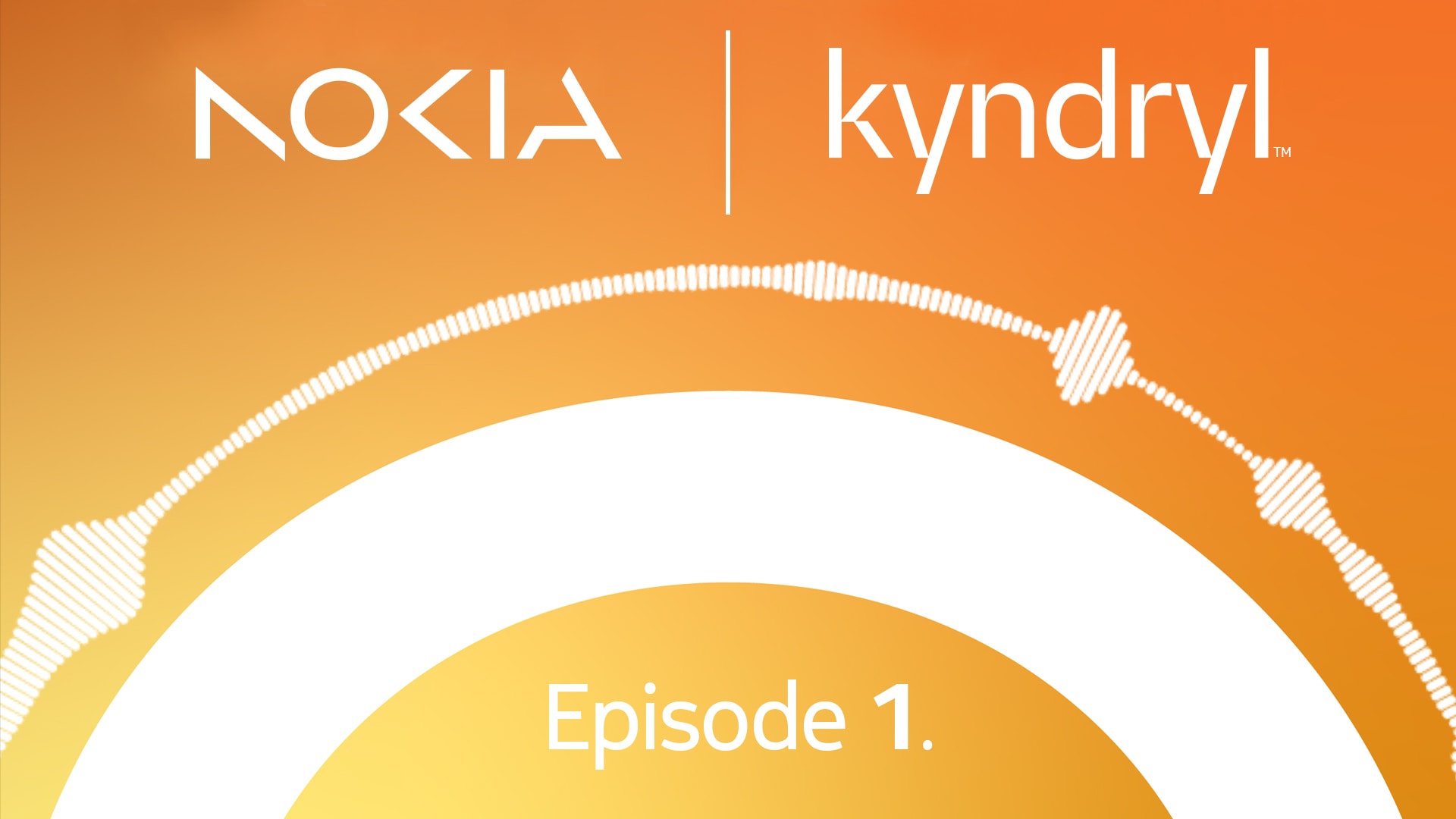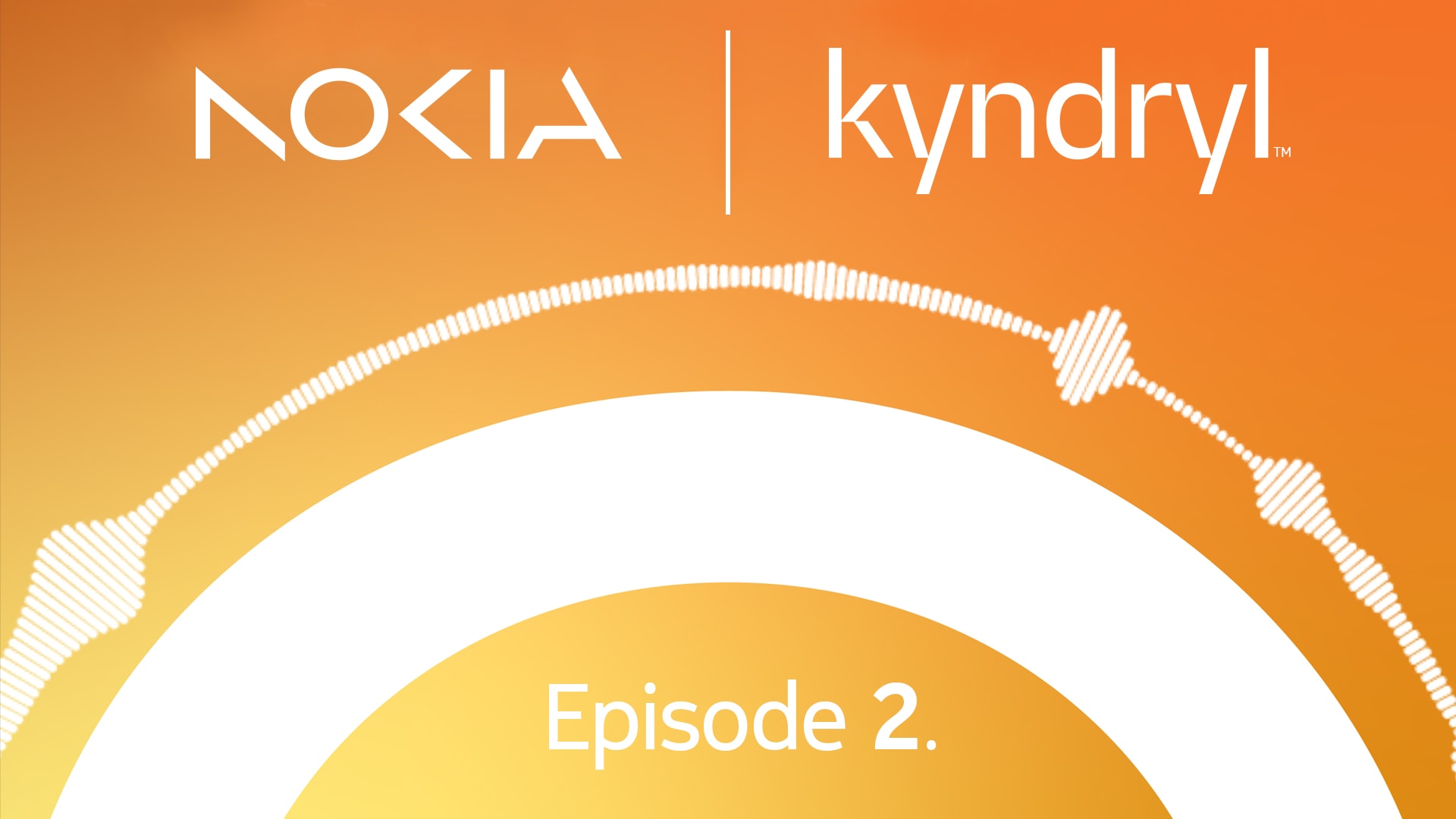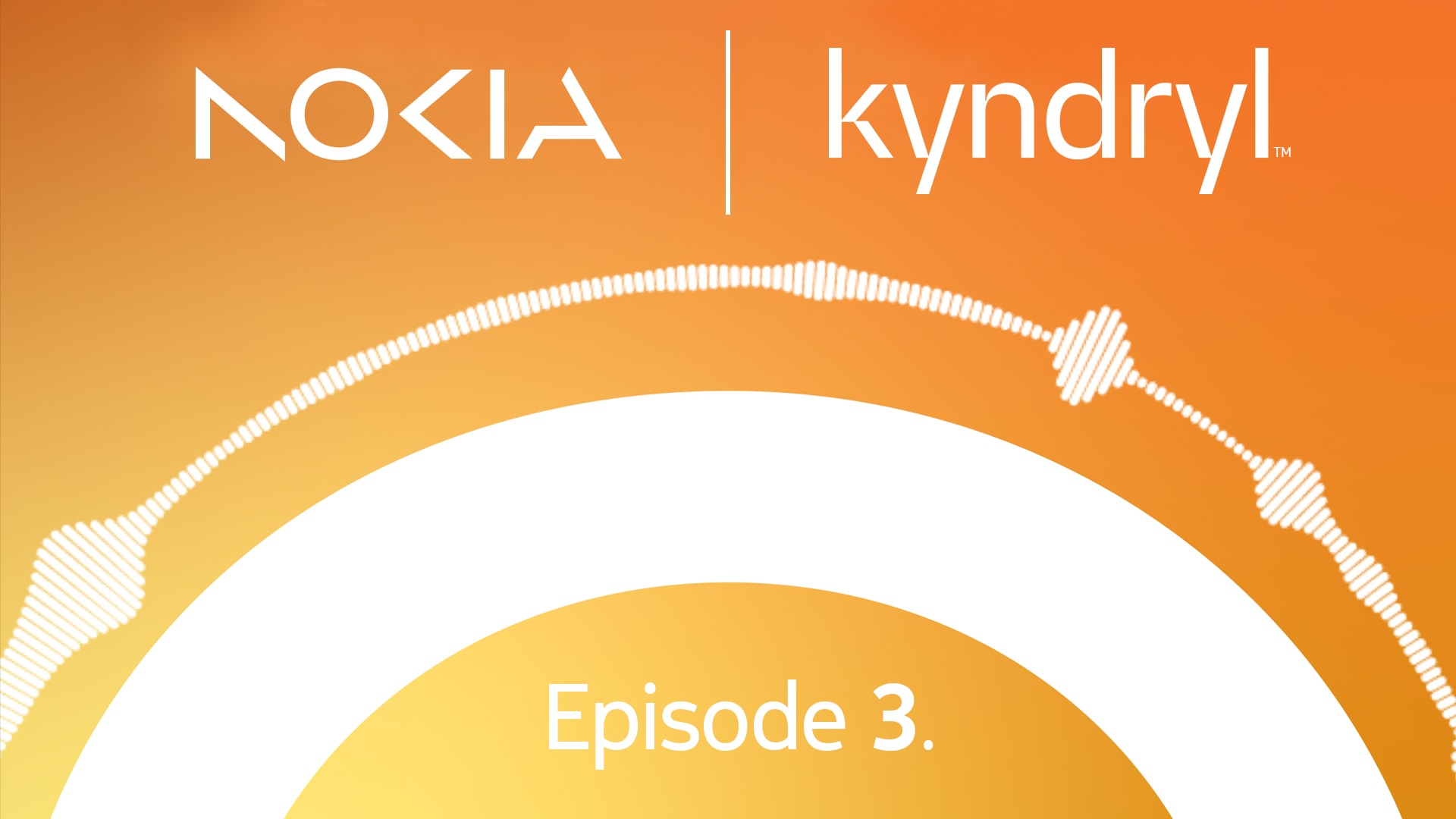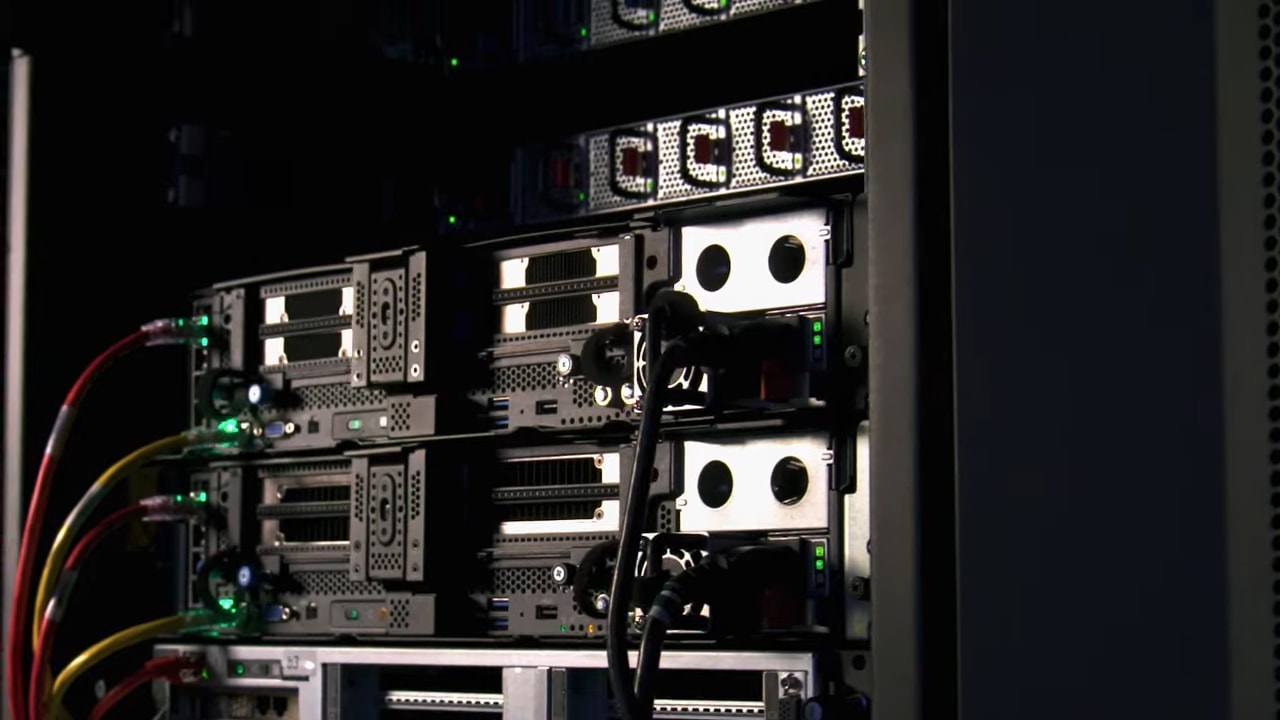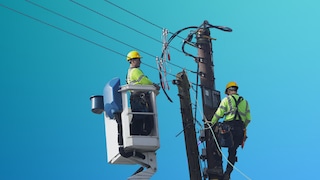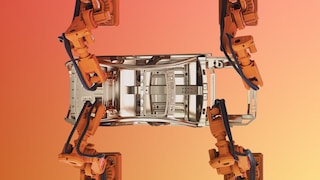Enterprise cloud networks
Expand and automate your data centers and cloud networks to accelerate innovation with confidence in the AI/ML era

Enterprises are modernizing their data centers and cloud networks for the AI/ML era, preparing to consume enormous volumes of data into AI models for greater customer insights and optimized operations. Harnessing their enterprise data with the exponential potential of AI and ML requires a flexible, secure and automated cloud networking solution.
Data centers and cloud networks are vital components for the success of today’s enterprises. They deliver business and mission-critical business applications and services, processing and storing volumes of customer sensitive or proprietary data that power data analytics and AI models to reveal new business opportunities. To seize these opportunities, you need to confidently transmit, manage and secure that valuable data across your network.
Nokia Enterprise Cloud Network solution is built with field-proven data center technologies. We employ our industry-leading IP and optical hardware and software coupled with our cloud-native network automation platform. This open and extensible platform supports AI intent-based operations with real-time streaming and continuous reconciliation with closed loop life-cycle management. Together, they provide the scalability, performance and reliability from the network needed to support your evolution to AI and ML-enabled operations. Our cloud network solution offers the observability, agility and simplicity of a cloud-consumption automation platform that accelerates new business opportunities while giving network operations the tools they need for the AI/ML era.
The importance of a modern enterprise cloud network to your digital transformation
Your enterprise data center and cloud network operations teams face a difficult challenge: how to find the time to design and build new applications and services to meet the growing needs of your business while continuing to manage and support legacy services and applications on outdated infrastructure and operations?
Nokia’s Enterprise Cloud Network solution gives your network operations team the agility and scalability to meet the fast-growing needs of the business for new AI-based applications and services. It also provides a more manageable, automated platform for supporting legacy services as operations find time to migrate them from your legacy infrastructure.
How does AI and ML affect enterprise data centers?
The rapid adoption and investment in AI/ML is dramatically changing how enterprise data center and cloud network architectures are being designed, built and operated.
New high-performance clusters are being added to support the training and inference modeling to create new AI/ML end-customer applications but also in support of business and network operations. The workloads for modeling can require massive amounts of compute, processing and storage. These workloads also require high-bandwidth interconnectivity, low-latency and lossless transmission across the enterprise network. Higher performance is not only required in the back- and front-end of the data center, but also in the data center interconnect between enterprise data centers and to public cloud networks across metro and wide area networks. Quality of service across the network is important so that AI traffic flows can be prioritized and bottlenecks avoided.
AI/ML can also help automate routine maintenance processes, streamline data center operations and vastly improve other tasks related to workload management and orchestration. This can help take some of the pressure off IT staff, giving them more time to focus on innovations that will support the growth of the business.

Brochure
Data center networks for the AI era
Discover the power of collaboration
The rising cost of public clouds
For more than a decade, enterprises have moved workloads and applications onto public clouds enabling them to consolidate the number of their own private data centers and reducing both CAPEX and OPEX costs. However, as this shift took place, enterprises saw the cost for these cloud network services rise significantly and are now auditing their public cloud costs more closely to better optimize compute and storage resources. The added cost for compute resources needed for AI modeling is further complicating this analysis.
Rebalancing data centers
As a result, enterprises are now re-evaluating their overall cloud migration strategy and assessing their own private data center network infrastructure. More enterprises are adopting a revised hybrid cloud architecture by repatriating some of the business- and mission-critical workloads to their own private data centers where they can maintain operational control, ensure regulatory compliance as well as securing the integrity of personal data.
To rebalance the workloads between the cloud and private data centers, an enterprise needs a scalable, high-performance, modern data center network that is resilient, secure and adaptable to the demands of their business. They want a cloud-native, open architecture that delivers the flexibility of public cloud environments along with the ability to automate manual processes using robust tool sets — all the while meeting the highest levels of security to protect their proprietary data and their customers.
IT staffing, experience and time limit growth opportunities
Enterprise IT network operations team needs to be responsive to the demands of the business, but there are several barriers that hinder them. The first is the continuous and widespread shortage of experienced IT network professionals; many enterprises have difficulty hiring skilled or even entry-level talent. Also, many of the experienced IT network operations professionals are beginning to retire leaving a knowledge gap. The second barrier is that the network operations team spends the majority of their day running the network: performing routine network admin tasks, adding new devices, troubleshooting and fixing problems. This leaves very little time to provide and support infrastructure enhancements to grow the business.
Confidence and trust in the network
Enterprises want to move quickly to create new AI/ML applications and services in response to customer demands and competitive pressures. To accelerate this development, innovative enterprises have introduced AI and MLOps software tools and CI/CD methods and processes into their software life-cycle management. This allows them to rapidly scale and speed delivery of new services but also puts stress on the network and how it operates.
Enterprises also depend upon the business- and mission-critical applications and services that are essential to their operation and to their customers. Deployed across both the enterprise data center and public cloud, they are relied upon to be always available. Therefore, any changes or updates to the network require careful planning to ensure there is no unplanned disruption to service. This slow, deliberate process creates frustration and conflict between the business lines that want to move quickly and the operations teams that must maintain high-availability and performance for these critical services.
Over the years, enterprises added network automation and tools in their data centers and cloud networks to provide greater speed and agility. These automation platforms were, however, often built on top of existing network infrastructure using outdated network operations systems (NOSs). Legacy NOSs do not have the necessary software architecture nor the software quality that gives enterprise network operations the trust in the automation output and tools to implement changes to the network. As a result, the existing automation platforms have fallen short of their goals.
What’s needed in the data center is a modern network OS that is open, flexible, and programmable that gives the network operations team an automation platform and tools to confidently implement changes without compromising on the reliability and performance of the network in running their business and supporting mission-critical applications and services.

Business case
Data Center Fabric business case analysis tool
Key requirements of a modern enterprise cloud network to accelerate automation and innovation
Enterprises accelerating automation and innovation of their operations must have a cloud network foundation built with industry-leading technology, field-proven designs in large-scale deployments and an understanding of the needs and goals of their business. This data center network consists of the following five essential components:
- Modern data center infrastructure (servers, storage and switch fabric) that has the capacity and performance for business- and mission-critical applications and a modern, open and extensible data center automation, orchestration and life-cycle management platform
- High-performance IP network that consists of a scalable, flexible data center gateway for routing within and out of the data center to provide peering for internet connectivity and cloud networks
- High capacity, optical transport network for data center network interconnect (DCI) and metro or long-haul transport
- In-building fiber optical LAN to meet the broadband access needed to support the high-speed business applications
- Multi-layer network security that protects against DDoS attacks and quantum computing cyber-security threats.
Modern data center and cloud networking requirements
To address rapidly changing market dynamics for increasing capacity, performance, agility, and innovation while still delivering the reliability and the security needed for mission-critical operations, enterprises are modernizing and upgrading data center infrastructure and their cloud network to meet the new network requirements for the AI era.

How can Nokia help you implement networking for AI workloads?
What are the components of a modern enterprise cloud network?

A scalable, high-performance and terabit data center network fabric
A modern enterprise cloud network is built with a data center fabric architecture with scalable leaf and spine switches. The Nokia 7220 IXR fixed variants and the Nokia 7250 IXR modular leaf-spine switches provide the high-performance, density and capacities needed for modern data center infrastructure for HPC and AI/ML workloads.

Open, extensible, resilient NOS
To gain the maximum benefits of automation and innovation from cloud networks, the underlying Network Operating Systems (NOS) must be open and extensible. The Nokia SR-Linux (SRL) NOS is built with an innovative open architecture, using cloud-native design principles that is micro-services based and supports hitless application upgrades and resilient networking upgrades to ensure business- and mission-critical service continuity. SR Linux uses the same field proven, high-performance and secure IP protocol stacks and network functions from the Nokia Service Router Operating System, SR-OS.

Model-driven management with full stack observability and telemetry
Any cloud networking operations organization wants a modern NOS with a model-driven management design, full stack telemetry, YANG data models with a gPRC network management interface (gNMI). These will enable network automation for better visibility, efficiency and reduced costs. SR Linux is built from the beginning with a model-driven management design and YANG data models enabling NetOps network automation to improve efficiency and reduce costs. It supports an open, scalable telemetry framework for unmatched observability and streaming telemetry using a gRPC framework and a gPRC network management interface (gNMI).

The ability to create tools and agents and share information across other applications
Cloud networking DevOps want software development kits (SDKs) and libraries that allows them to customize their network and its operations with agents and tools to meet the specific needs of their business. The Nokia NetOPs Development Kit (NDK) is a suite of libraries that allows enterprise IT and cloud teams to program high-performance, integrated agents that run alongside the SR Linux. Agents built with the gRPC NDK share state information with other applications and enable the operations team to create their own configurations.

Network automation and life-cycle management
Life-cycle management and automation of your enterprise operations are essential in a modern data center network with network operations tools that reduce network management complexity and improve observability. Nokia Event-Driven Automation (EDA) supports life-cycle management and automation of your data center fabric network. It is an intent-based, cloud-native, open and extensible platform with a Kubernetes foundation that simplifies operations, improves data center network observability and services creation within and across data centers. With EDA, network operations can create a virtual digital twin of their data center fabric to test and validate changes before they are deployed, which lowers the risk of misconfigurations and service disruptions.
Nokia has extensive experience working with data center network infrastructure providers and large enterprises in evolving their data center architectures and network operations. Our technology innovations in data center fabric networks are built to address the unique needs of the enterprise cloud network. It delivers the scalability and performance needed to support emerging AI/ML technologies and workloads.
IP routing and data center gateway requirements for enterprise cloud networks
IP edge and core routing is an essential function of an enterprise cloud network with multiple instances where IP services and gateway access are need entering and exiting the data center.
What are the requirements of the data center gateway to support the enterprise cloud network?
The data center gateway is a carrier-grade, multi-functional router that provides IP network connectivity within the data center fabric network to the spine switches; external data center inter-connectivity (DCI) to multi-cloud and wide area networks; and to Internet Exchange peering points.
The Nokia Data Center Gateway delivers reliable, scalable and secure data center interconnect and peering with its industry-leading 7750 Service Router. With its advanced FP5 silicon and field-proven software its able to handle critical networking functions of your date center fabric and provide the speed, capacity, power efficiency, flexible capability and network security required for IP backbone connectivity, IP interconnection, IP DCI and IP peering roles.
What are the requirements of the IP network to support the enterprise cloud network?
IP edge and core routing is an essential function of an enterprise cloud network with multiple instances where IP services and gateway access are needed for entering and exiting the data center.

Application note
Ethernet Virtual Private Networks on Nokia routing platforms
Speed and capacity with flexible port interfaces: As enterprise cloud networks increase in size, IP edge and core routing with the commensurate scale and capacity is needed to provide connectivity now and in the future. The Nokia 7750 SR-s series of IP routers provides a product family with platforms ranging from 1.6 Tb/s to 216 Tb/s full duplex system capacity. It leverages its own leading edge FP network processors that provide deterministic packet processing at scale even for process intensive operations. Its universal line cards support any speed on any service on any port, ranging from 10GE to 800GE.
Deterministic application and service delivery: As the enterprise business grows, new applications and services on its cloud networks will require differentiated QoS treatment. IP routers within the cloud network must be able to deliver deterministic performance at scale. The Nokia FP5 network processor used in the 7750 SR-s supports fine grain QoS and high-scale routing and delivery of any service with no performance degradation.
Modern NOS: Enterprise network operations want to be able to manage their own data center and cloud networks in the same way that they manage and operate their public cloud. A modern network operating system (NOS) that provides intent-based model-driven management and programmability is needed across the entire cloud networking infrastructure. The Nokia Service Router Operating System (SR-OS) used in the Nokia IP Service Router family provides the programmability and model-driven management capabilities that enable enterprises to automate their operations.
Multi-layer security: With the increasing number of IoT devices and the adoption of wireless access technologies, the threat of attacks and hacking into enterprise networks is a major concern. Data centers need security protection at all layers of the network infrastructure. The Nokia 7750 SR is secure by design with router control, data and management plane protection together with embedded security built into every layer of our IP network. Universal encryption (ANYsec) secures any service, over any transport at line rate.
Power efficiency: Enterprises are looking for ways to reduce the power consumption of their cloud networks. The Nokia 7750 SR-s employs a power efficient design and density optimization based upon FP5 network processor, which typically consumes power at the rate of 0.1W/Gig in chassis-based systems.
Optical transport requirements for cloud networks
The growth of enterprise data traffic requires cloud networks to increase in speed, capacity and scale. The adoption of AI/ML and other industrial metaverse applications and tools will only accelerate this volume of data traffic. In addition to the increase in the capacity for data center intra-connectivity, there is also a greater need for high-capacity optical networks to inter-connect data centers and public/private enterprise cloud networks.
What are the requirements of the optical network to support the enterprise cloud network?
Open architectures with advanced coherent optics: Enterprises building modern cloud networks want optical solutions with open architectures that can scale capacity. They need to meet performance and operational automation requirements and lower the transport cost per bit. Nokia Optical Networking solutions are high-performance, automated disaggregated platforms that provide independent scaling of their data center optical networking equipment and their DWDM optical line systems (OLS). This enables them to take advantage of the rapid changes in technology for increases in gigabit speeds and terabyte capacity.
Modular, compact enterprise optical data center platforms: The shift to cloud-based enterprise services creates a greater need for modular optical data center platforms with greater bandwidth capacities to interconnect data centers and cloud networks. The Nokia 1830 Photonic Services Interconnect – Modular (PSI-M) modular architecture allows enterprises to configure the interfaces and capacities that are needed for each application. The Nokia 1830 Photonic Service Switch – 4II is a compact platform that delivers scale and efficiency to data center interconnect and metro-edge applications. Nokia’s sixth generation of super-coherent optics, PSE-6s, delivers increases in scale and fiber capacity and supports 400GE and 800GE high-speed interfaces across metro, long-haul and sub-sea networks—all while reducing power consumption.
Optical network automation: As enterprise cloud networks increase in scale and complexity, it becomes more difficult to manage the underlying optical networks. With the Nokia WaveSuite set of applications, an enterprise gains operational efficiency and maximizes the use of these resources.
Coherent optics: With demand for bandwidth increasing, enterprises need cloud networks that can cost-effectively add capacity where it’s needed. Nokia’s Coherent Routing solution combines pluggable digital coherent optics with our IP Service Routing portfolio, optical transport systems and network automation for more efficient and cost-effective IP network designs.
Flexible, scalable, inter-connect data center cloud networks options: As enterprises rebalance workloads between their data centers and cloud networks, they need high-performance, scalable, high-capacity and secure data interconnect solutions. Our Data Center Interconnect (DCI) options include: optical DWDM transport, VXLAN and IP/MPLS routing for both the data center and the WAN. They support optical wavelength, ethernet and IP interfaces giving enterprises options to choose the best solution to meet their business needs. These offer new horizons for scalability, making it possible to add capacity without enlarging the physical data center footprint.
Optical LAN for Enterprise broadband access networks
Traditionally, an enterprise connects their office and operations environment with a combination of Wi-Fi access, structured cable and network cable to meet their business data communication needs. Ethernet cable has been the primary choice for the enterprise in-building wired data network owed to its high level of standardization, availability and cost. But as enterprise capacity and scalability requirements are increasing, optical LANs have become an affordable option.
How does an Enterprise Optical LAN architecture compare with a traditional LAN architecture?
Enterprise Optical LANs are simpler to design and deploy over traditional LAN architectures requiring fewer network components and can reach far greater distances (up to 20 km) over traditional copper-based LAN equipment. This is architecture is particularly beneficial in multi-story buildings and large enterprise campus networks where mid-span switching can be eliminated.
The Nokia Optical LAN solution simplifies the enterprise IT in-building and campus network with a fiber-optic distribution network that reduces network complexity with fewer network elements, reduces overall footprint both in fiber trays and equipment and requires less energy than traditional copper-based cable networks. It is also a future proof solution providing 10G and 25G today with the ability to increase capacity to 50G and beyond.
In industrial facilities, the Nokia Optical LAN for industry sites delivers the backhaul capacity to support the massive volume of data that’s connected to both fixed and wireless sensors, IoT devices, machines and systems from the production floor.

Brochure
Nokia Optical LAN for enterprise
How are security and privacy concerns affecting enterprise data centers?
Given the immense value of their data, protecting it from malicious actors is a critical concern for enterprises. A security breach can be expensive, not only financially but also in reputational damage. Enterprises need to comply with increasingly stringent rules and regulations for data privacy, data management, storage and security. As ransomware, distributed denial of service (DDoS) attacks and other cyber-threats become increasingly sophisticated, keeping up with the ever-evolving threat landscape demands more and more resources all the time.
Governments and the security industry are projecting the possibility of powerful crypto-relevant quantum computers (CRQC) within the next 5-10 years. This presents a near-term threat to enterprises in securing their proprietary and mission-critical data from bad actors that can store encrypted data now and decrypt later when CRQC can break existing encryption algorithms. Current security measures will be no match for these threats, so enterprises need to start protecting themselves now with a network security solution designed to counter the CRQC threat. The Nokia Quantum-Safe Network solution provides quantum-safe encryption, delivers secure symmetric key management and distribution, and intrusion detection to keep your data safe and your network secure both now and in the future.
Nokia Deepfield Defender is a DDoS prevention solution that combines big-data IP analytics with the advanced capabilities of Nokia’s fully programmable FP5 network processors used in our 7750 SR-s to neutralize DDoS attacks at the IP networks edge or at peering points. Deepfield Defender is integrated into the 7750 Defender Mitigation System (DMS), a dedicated security enforcement platform delivering high performance with speed, power efficiency and scalable capacity, along with advanced DDoS protection and automation capabilities.
Sustainability
There is growing pressure — regulatory, social and economic — for enterprises to make their operations more sustainable. Enterprises are looking for solutions that use resources more efficiently and cut power consumption to help meet their ESG goals.
How Nokia solutions can help you achieve your climate goals
Nokia became the first telecoms vendor to have our Science Based Target (SBT) validated by the Science Based Targets initiative (SBTi) in 2017 and were among the first 100 companies to do so. In 2023, Nokia investigated how to accelerate its net zero commitment and needed related actions. Nokia has now accelerated both its net zero target for Scopes 1, 2 and 3 and its interim 2030 Scope 1 and 2 targets by announcing that:
- Nokia commits to net-zero greenhouse gas (GHG) emissions across the value chain (Scopes 1, 2 and 3) by 2040.
- This puts Nokia ahead of the Paris Agreement goal to reach net zero by 2050.
- Nokia also aims to accelerate its existing interim 2030 target to reduce emissions across its own operations (Scopes 1 and 2), reaching an 83% reduction by 2030.
- With our new announcement we therefore not only reiterate our prior commitment to reach a 50% reduction in our value chain by 2030 from a 2019 baseline, but we are also now accelerating our 2030 scope 1 and 2 targets to reach 83% by 2030 instead of 50%. We also look to reach net zero across all Scopes 1, 2 and 3 by 2040.
Learn more about Nokia’s sustainability approach.
Explore networking solutions for your industry
Nokia has designed and deployed mission- and business-critical networks for service providers, governments and enterprises across a wide range of industries. Find out how our modern and open data center networking solutions can unlock new opportunities for your business.
Related solutions and products
Solution
Fast and secure over-the-air (OTA) software updates for optimizing automotive retail services
Solution
High-performance, ultra-reliable IP networking for new and legacy applications
Solution
Modernize your emergency services to enhance citizen interactions
Solution
Transform your backhaul transport network for the IP, IoT and cloud era
Solution
Accelerate productivity and reduce costs with a highspeed, resilient and future-proof fiber-based communications network
Solution
Put data center fabrics and clouds to work to accelerate your digital rail journey
Learn more

Blog
Video
Unboxing and installing the Nokia Inwall ONT G-040P-R
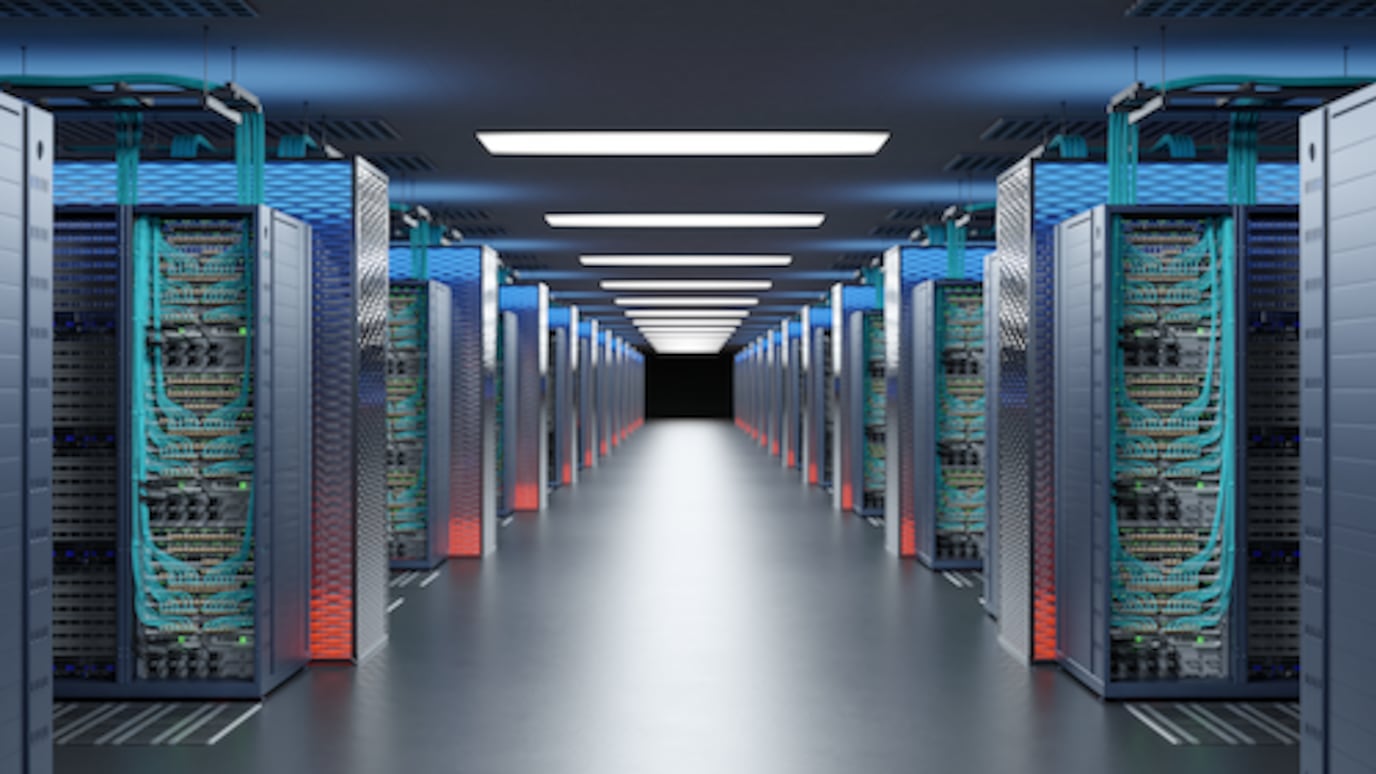
Blog

Blog

Blog

Article

Blog

Blog
Latest news
Ready to talk?
Please complete the form below.
The form is loading, please wait...
Thank you. We have received your inquiry. Please continue browsing.

